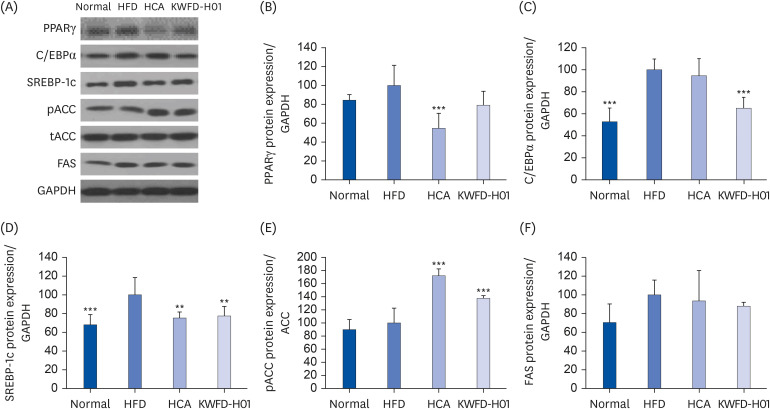1. Bjerregaard LG, Jensen BW, Ängquist L, Osler M, Sørensen TI, Baker JL. Change in overweight from childhood to early adulthood and risk of type 2 diabetes. N Engl J Med. 2018; 378:1302–1312. PMID:
29617589.
2. Twig G, Yaniv G, Levine H, Leiba A, Goldberger N, Derazne E, Ben-Ami Shor D, Tzur D, Afek A, Shamiss A, et al. Body-mass index in 2.3 million adolescents and cardiovascular death in adulthood. N Engl J Med. 2016; 374:2430–2440. PMID:
27074389.
3. Kivimäki M, Strandberg T, Pentti J, Nyberg ST, Frank P, Jokela M, Ervasti J, Suominen SB, Vahtera J, Sipilä PN, et al. Body-mass index and risk of obesity-related complex multimorbidity: an observational multicohort study. Lancet Diabetes Endocrinol. 2022; 10:253–263. PMID:
35248171.
4. Nam GE, Kim YH, Han K, Jung JH, Rhee EJ, Lee WY. Obesity Fact Sheet of the Korean Society for the Study of Obesity. Obesity fact sheet in Korea, 2020: prevalence of obesity by obesity class from 2009 to 2018. J Obes Metab Syndr. 2021; 30:141–148. PMID:
34158420.
5. Hong H, Park J, Lumbera WL, Hwang SG. Monascus ruber-fermented buckwheat (red yeast buckwheat) suppresses adipogenesis in 3T3-L1 cells. J Med Food. 2017; 20:352–359. PMID:
28332893.
6. Zha BS, Zhou H. ER stress and lipid metabolism in adipocytes. Biochem Res Int. 2012; 2012:312943. PMID:
22400114.
7. Shoelson SE, Herrero L, Naaz A. Obesity, inflammation, and insulin resistance. Gastroenterology. 2007; 132:2169–2180. PMID:
17498510.
8. Bergqvist AG. Long-term monitoring of the ketogenic diet. Do’s and Don’ts Epilepsy Res. 2012; 100:261–266.
9. Müller TD, Clemmensen C, Finan B, DiMarchi RD, Tschöp MH. Anti-obesity therapy: from rainbow pills to polyagonists. Pharmacol Rev. 2018; 70:712–746. PMID:
30087160.
10. Greenway FL. The safety and efficacy of pharmaceutical and herbal caffeine and ephedrine use as a weight loss agent. Obes Rev. 2001; 2:199–211. PMID:
12120105.
11. Kim DH, Kwon SK, Han KD, Ji IB. Analysis of consumers’ characteristic factors affecting the intake of health functional food. Korean J Food Mark Econ. 2021; 38:23–42.
12. Batchuluun B, Pinkosky SL, Steinberg GR. Lipogenesis inhibitors: therapeutic opportunities and challenges. Nat Rev Drug Discov. 2022; 21:283–305. PMID:
35031766.
13. Mittendorfer B. Origins of metabolic complications in obesity: adipose tissue and free fatty acid trafficking. Curr Opin Clin Nutr Metab Care. 2011; 14:535–541. PMID:
21849896.
14. Park JC, Kim SC, Choi MR, Song SH, Yoo EJ, Kim SH, Miyashiro H, Hattori M. Anti-HIV protease activity from rosa family plant extracts and rosamultin from
Rosa rugosa
. J Med Food. 2005; 8:107–109. PMID:
15857219.
15. Yang JW, Kim SS. Ginsenoside Rc promotes anti-adipogenic activity on 3T3-L1 adipocytes by down-regulating C/EBPα and PPARγ. Molecules. 2015; 20:1293–1303. PMID:
25594343.
16. Song Y, Park HJ, Kang SN, Jang SH, Lee SJ, Ko YG, Kim GS, Cho JH. Blueberry peel extracts inhibit adipogenesis in 3T3-L1 cells and reduce high-fat diet-induced obesity. PLoS One. 2013; 8:e69925. PMID:
23936120.
17. Strable MS, Ntambi JM. Genetic control of de novo lipogenesis: role in diet-induced obesity. Crit Rev Biochem Mol Biol. 2010; 45:199–214. PMID:
20218765.
18. Seto T, Yasuda I, Akiyama K. Purgative activity and principals of the fruits of Rosa multiflora and R. wichuraiana. Chem Pharm Bull (Tokyo). 1992; 40:2080–2082. PMID:
1423761.
19. Lodhi IJ, Wei X, Semenkovich CF. Lipoexpediency: de novo lipogenesis as a metabolic signal transmitter. Trends Endocrinol Metab. 2011; 22:1–8. PMID:
20889351.
20. Park HJ, Nam JH, Jung HJ, Lee MS, Lee KT, Jung MH, Choi J. Inhibitory effect of euscaphic acid and tormentic acid from the roots of Rosa rugosa on high fat diet-induced obesity in the rat. Kor J Pharmacong. 2005; 36:324–331.
21. Vidal-Puig A, Jimenez-Liñan M, Lowell BB, Hamann A, Hu E, Spiegelman B, Flier JS, Moller DE. Regulation of PPAR gamma gene expression by nutrition and obesity in rodents. J Clin Invest. 1996; 97:2553–2561. PMID:
8647948.
22. Marques C, Meireles M, Norberto S, Leite J, Freitas J, Pestana D, Faria A, Calhau C. High-fat diet-induced obesity rat model: a comparison between Wistar and Sprague-Dawley rat. Adipocyte. 2015; 5:11–21. PMID:
27144092.
23. Udomkasemsab A, Prangthip P. High fat diet for induced dyslipidemia and cardiac pathological alterations in Wistar rats compared to Sprague Dawley rats. Clin Investig Arterioscler. 2019; 31:56–62.
24. Fu Z, Gilbert ER, Liu D. Regulation of insulin synthesis and secretion and pancreatic beta-cell dysfunction in diabetes. Curr Diabetes Rev. 2013; 9:25–53. PMID:
22974359.
25. Balsan GA, Vieira JL, Oliveira AM, Portal VL. Relationship between adiponectin, obesity and insulin resistance. Rev Assoc Med Bras. 2015; 61:72–80. PMID:
25909213.
26. Balistreri CR, Caruso C, Candore G. The role of adipose tissue and adipokines in obesity-related inflammatory diseases. Mediators Inflamm. 2010; 2010:802078. PMID:
20671929.
27. Stern JH, Rutkowski JM, Scherer PE. Adiponectin, leptin, and fatty acids in the maintenance of metabolic homeostasis through adipose tissue crosstalk. Cell Metab. 2016; 23:770–784. PMID:
27166942.










 PDF
PDF Citation
Citation Print
Print





 XML Download
XML Download